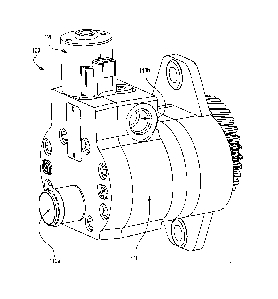Some of the information on this Web page has been provided by external sources. The Government of Canada is not responsible for the accuracy, reliability or currency of the information supplied by external sources. Users wishing to rely upon this information should consult directly with the source of the information. Content provided by external sources is not subject to official languages, privacy and accessibility requirements.
Any discrepancies in the text and image of the Claims and Abstract are due to differing posting times. Text of the Claims and Abstract are posted:
| (12) Patent: | (11) CA 2766860 |
|---|---|
| (54) English Title: | COLD START VALVE |
| (54) French Title: | ELECTROVANNE DE DEMARRAGE A FROID |
| Status: | Granted and Issued |
| (51) International Patent Classification (IPC): |
|
|---|---|
| (72) Inventors : |
|
| (73) Owners : |
|
| (71) Applicants : |
|
| (74) Agent: | BORDEN LADNER GERVAIS LLP |
| (74) Associate agent: | |
| (45) Issued: | 2018-06-12 |
| (22) Filed Date: | 2012-02-01 |
| (41) Open to Public Inspection: | 2012-08-16 |
| Examination requested: | 2016-12-30 |
| Availability of licence: | N/A |
| Dedicated to the Public: | N/A |
| (25) Language of filing: | English |
| Patent Cooperation Treaty (PCT): | No |
|---|
| (30) Application Priority Data: | ||||||
|---|---|---|---|---|---|---|
|
Parasitic hydraulic loading on an engine is significantly reduced during cold
starts by using an unloader valve to divert the flow of hydraulic fluid from a
hydraulic pump to a hydraulic actuator, i.e., load source, recirculating the
hydraulic
fluid between the hydraulic pump and the unloader valve.
Une charge hydraulique parasitique dans un moteur est significativement réduite pendant les démarrages à froid en utilisant une vanne de décharge pour dévier le flux du fluide hydraulique de la pompe hydraulique vers un actionneur hydraulique, soit une source de charge, en faisant recirculer le fluide hydraulique entre la pompe hydraulique et la vanne de décharge.
Note: Claims are shown in the official language in which they were submitted.
Note: Descriptions are shown in the official language in which they were submitted.

2024-08-01:As part of the Next Generation Patents (NGP) transition, the Canadian Patents Database (CPD) now contains a more detailed Event History, which replicates the Event Log of our new back-office solution.
Please note that "Inactive:" events refers to events no longer in use in our new back-office solution.
For a clearer understanding of the status of the application/patent presented on this page, the site Disclaimer , as well as the definitions for Patent , Event History , Maintenance Fee and Payment History should be consulted.
| Description | Date |
|---|---|
| Common Representative Appointed | 2019-10-30 |
| Common Representative Appointed | 2019-10-30 |
| Grant by Issuance | 2018-06-12 |
| Inactive: Cover page published | 2018-06-11 |
| Change of Address or Method of Correspondence Request Received | 2018-05-25 |
| Inactive: Final fee received | 2018-04-23 |
| Pre-grant | 2018-04-23 |
| Notice of Allowance is Issued | 2017-10-31 |
| Letter Sent | 2017-10-31 |
| Notice of Allowance is Issued | 2017-10-31 |
| Inactive: Q2 passed | 2017-10-27 |
| Inactive: Approved for allowance (AFA) | 2017-10-27 |
| Letter Sent | 2017-01-11 |
| Request for Examination Requirements Determined Compliant | 2016-12-30 |
| All Requirements for Examination Determined Compliant | 2016-12-30 |
| Request for Examination Received | 2016-12-30 |
| Inactive: Cover page published | 2012-08-21 |
| Application Published (Open to Public Inspection) | 2012-08-16 |
| Inactive: First IPC assigned | 2012-07-31 |
| Inactive: IPC assigned | 2012-07-31 |
| Application Received - Regular National | 2012-02-16 |
| Letter Sent | 2012-02-16 |
| Inactive: Filing certificate - No RFE (English) | 2012-02-16 |
There is no abandonment history.
The last payment was received on 2018-01-17
Note : If the full payment has not been received on or before the date indicated, a further fee may be required which may be one of the following
Patent fees are adjusted on the 1st of January every year. The amounts above are the current amounts if received by December 31 of the current year.
Please refer to the CIPO
Patent Fees
web page to see all current fee amounts.
| Fee Type | Anniversary Year | Due Date | Paid Date |
|---|---|---|---|
| Registration of a document | 2012-02-01 | ||
| Application fee - standard | 2012-02-01 | ||
| MF (application, 2nd anniv.) - standard | 02 | 2014-02-03 | 2014-01-23 |
| MF (application, 3rd anniv.) - standard | 03 | 2015-02-02 | 2015-01-21 |
| MF (application, 4th anniv.) - standard | 04 | 2016-02-01 | 2016-01-20 |
| Request for examination - standard | 2016-12-30 | ||
| MF (application, 5th anniv.) - standard | 05 | 2017-02-01 | 2017-01-18 |
| MF (application, 6th anniv.) - standard | 06 | 2018-02-01 | 2018-01-17 |
| Final fee - standard | 2018-04-23 | ||
| MF (patent, 7th anniv.) - standard | 2019-02-01 | 2019-01-28 | |
| MF (patent, 8th anniv.) - standard | 2020-02-03 | 2020-01-24 | |
| MF (patent, 9th anniv.) - standard | 2021-02-01 | 2021-01-22 | |
| MF (patent, 10th anniv.) - standard | 2022-02-01 | 2022-01-28 | |
| MF (patent, 11th anniv.) - standard | 2023-02-01 | 2023-01-27 | |
| MF (patent, 12th anniv.) - standard | 2024-02-01 | 2024-01-26 |
Note: Records showing the ownership history in alphabetical order.
| Current Owners on Record |
|---|
| DEERE & COMPANY |
| Past Owners on Record |
|---|
| JOHN R. MAHRENHOLZ |
| JUSTIN J. TURNIS |